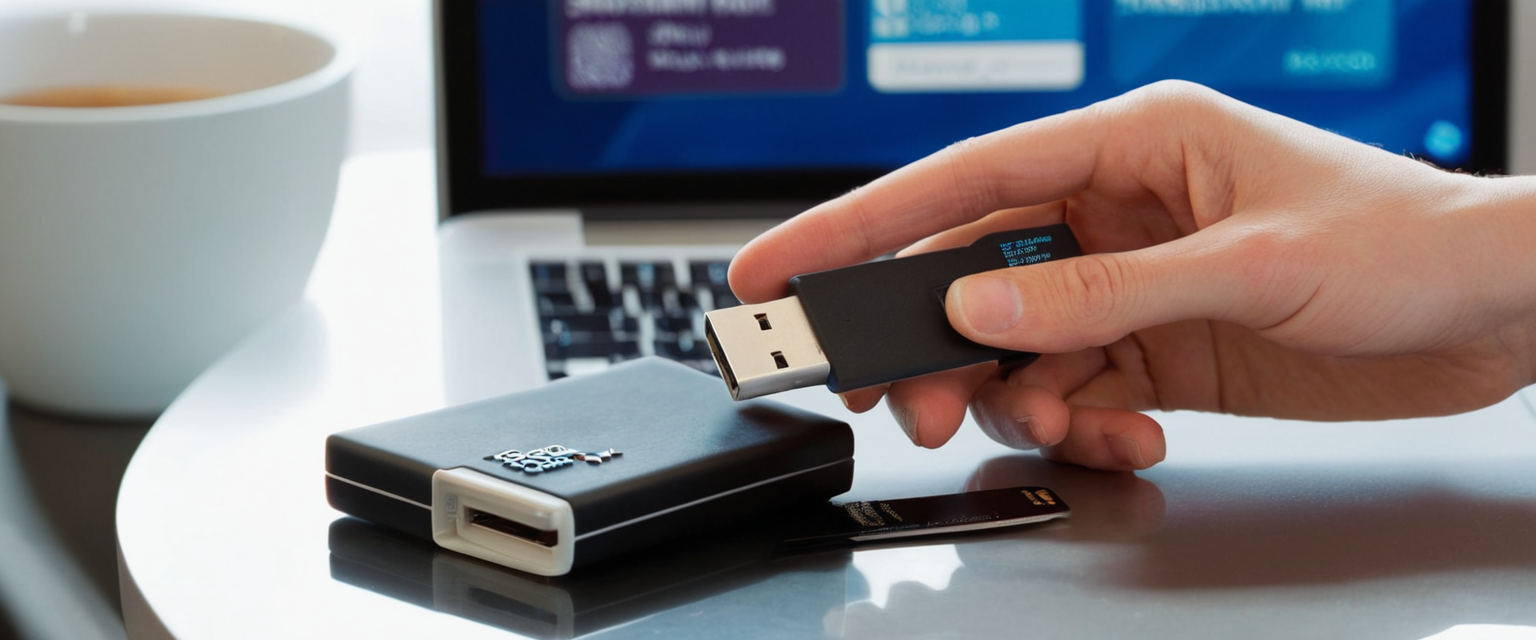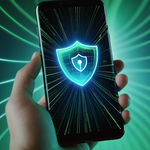
Traveling internationally while maintaining secure access to critical digital accounts presents a unique security challenge that requires careful planning and implementation of robust authentication strategies. Security keys—physical devices that provide hardware-based, phishing-resistant authentication—have become essential tools for individuals and professionals who need to protect sensitive information while crossing borders and navigating unfamiliar networks. This comprehensive report examines the multifaceted aspects of traveling with security keys, synthesizing best practices from institutional guidance, manufacturer recommendations, and cybersecurity research to provide a thorough roadmap for secure portable authentication management.
Understanding Security Keys: Foundational Concepts for Travelers
What Are Security Keys and Their Role in Authentication
Physical security keys represent a fundamental advancement in cybersecurity authentication, providing protection that extends far beyond traditional password-based systems. A security key is a small external device that resembles a thumb drive or tag and serves as verification when signing into accounts through two-factor authentication, acting as the second piece of information required to access accounts on new devices or over the web. These devices work by using public key cryptography to verify a user’s identity and confirm the legitimacy of the login page, ensuring that attackers cannot access an account even if they have successfully tricked users into providing their username and password.
The fundamental strength of security keys lies in their inherent resistance to phishing attacks, which represent one of the most persistent threats to online security. Phishing-resistant authentication uses hardware-based verification that validates both the user’s possession of the key and the authenticity of the service being accessed. Unlike traditional two-factor authentication methods such as SMS codes or authenticator apps, which can be intercepted or socially engineered, security keys provide cryptographic proof that users are interacting with legitimate services. The human element of security is effectively removed from the authentication process—users cannot be tricked into authorizing a login on a fraudulent website because the key’s internal logic will not generate an authentication signature for an illegitimate domain.
Types of Security Keys Available for Travelers
The market offers several distinct categories of security keys, each with specific advantages and considerations for traveling professionals. YubiKeys, manufactured by Yubico, represent the most extensively deployed hardware security keys globally, with deployment among nine of the top ten internet brands and millions of individual users. These keys support multiple authentication protocols including FIDO2, FIDO Universal 2nd Factor (U2F), and proprietary Yubico OTP, making them compatible with hundreds of services without requiring additional software or batteries.
Google Titan Security Keys provide an alternative approach built with a hardware chip containing firmware engineered by Google to verify the key’s integrity and ensure the keys have not been physically tampered with. Titan keys work with popular devices, browsers, and a growing ecosystem of services supporting FIDO standards, offering both USB-A/NFC and USB-C/NFC form factors. Generic FIDO2 security keys from manufacturers such as Feitian and SoloKeys provide cost-effective alternatives starting around $25, though they typically support fewer protocols than branded options.
The distinction between key types matters significantly for travelers because different connectors support different Apple devices and platforms. Security keys with both near-field communication (NFC) and a USB-C connector work with most modern Apple devices, while Lightning connectors work with iPhone 14 and earlier models, and USB-A connectors work with older Mac models. This diversity means that travelers must assess their specific device ecosystem before departure to ensure compatibility across all devices they plan to use during their trip.
Pre-Travel Preparation: Strategic Planning for Secure Authentication
Registering Multiple Security Keys
The most critical preparation step for traveling with security keys is establishing redundancy through multiple registered keys. The fundamental best practice is to have multiple copies of security keys, with at least one backup key remaining at home while traveling. Security experts recommend keeping a second copy secure at home—ideally in a lockbox or safe—and considering leaving a third key in an office or with a trusted family member. This multi-key strategy ensures that if a primary key is lost, stolen, or damaged during travel, alternative registered keys provide immediate account access without triggering lengthy account recovery procedures.
The optimal time to register multiple security keys is simultaneously during the initial setup process. By registering all keys at the same time, users need only visit each service once rather than repeatedly entering credentials to add additional keys, and they eliminate the risk of losing the primary key before backup registration is completed. Many services allow multiple security keys to be registered with a single account—for example, LastPass permits five YubiKeys per account—though the specific number varies by service and should be verified before travel.
For Apple Account holders, at least two FIDO Certified security keys that work with regularly used Apple devices are required. The registration process should verify device compatibility across all platforms the user may access during travel, including consideration of whether Apple Watch, Apple TV, or HomePod devices will need authentication support. Users should note that older devices that cannot be updated to compatible software versions will not support security keys, potentially requiring alternative authentication methods for legacy equipment.
Creating and Securing Backup Authentication Methods
While security keys provide the strongest authentication, travelers should establish backup authentication pathways to ensure account access if the primary key becomes inaccessible. Backup codes—typically sets of 10 eight-digit numerical codes generated during security key setup—provide one-time-use recovery access without requiring the physical key. Google’s backup codes system, for example, allows users to download or print backup codes before travel and store them separately from the primary security key.
Authenticator applications serve as secondary authentication factors for services that support them, though they provide less security than hardware keys since they store secrets on potentially compromised mobile devices. Applications such as Google Authenticator, Microsoft Authenticator, or open-source alternatives like Ente Auth generate time-based one-time passwords (TOTP) that change every 30 seconds. Travelers should register backup authenticator apps on devices they control and keep them updated, though relying solely on authenticator apps is weaker than hardware-based security.
Recovery emails and phone numbers should be configured and verified before travel to ensure that account recovery processes can be initiated if needed. Users should document these backup methods in a secure location—either memorized, stored in an encrypted password manager, or written in a physical backup kept separately from travel devices. The principle of separation is critical: backup codes should not travel with the primary security key, recovery information should not be stored on the same device as the primary key, and these redundant authentication methods should be distributed across different physical and digital locations.
Installing and Configuring Travel-Specific Security Software
Preparation for international travel should include installation and configuration of comprehensive security tools before departure. Virtual Private Network (VPN) software should be installed and tested before traveling to ensure it functions correctly across different network environments. Full tunnel VPN configuration—which protects all internet traffic—is preferable to split tunneling for travelers handling sensitive information, as it encrypts all data transmitted between devices and VPN servers. Universities and organizations typically provide institutional VPN services for eligible travelers, which should be configured with full tunnel settings prior to departure.
Encryption software appropriate to the destination country must be installed and configured before travel, as many countries restrict imported encryption technology. Full disk encryption—freely bundled with recent versions of Windows (BitLocker) and macOS (FileVault)—should be enabled on all travel devices. Travelers should contact their organization’s IT support to decrypt data before departure if traveling to countries with encryption restrictions. Many countries maintain severe restrictions on encryption technologies, requiring manufacturers and sellers to obtain licenses before producing or selling cryptography products, with some nations restricting import and export entirely.
Backup and synchronization tools should be configured and tested before travel to ensure that important data exists in multiple secure locations. Travelers should back up all devices before departure to secure external storage or cloud services, allowing data recovery if devices are lost, stolen, or confiscated at borders. The strategy should distinguish between data needed for immediate access during travel and data that can be recovered from backups if necessary.
Managing Security Keys During Active Travel
Physical Security and Key Separation Strategies
During active travel, the physical security of hardware authentication keys requires careful management distinct from standard device protection. A counterintuitive best practice involves separating the security key from primary computing devices during travel rather than keeping all security infrastructure together. While it may seem convenient to keep a security key attached to a laptop or phone keychain, storing the key separately in a different location within one’s travel bag or on one’s person reduces the risk that a single theft incident compromises both the device and the authentication mechanism.
Practical implementation suggests keeping the primary security key in one location during travel—perhaps in a small lockbox in hotel luggage—while carrying a backup security key in a separate location, such as on one’s physical keychain or in a wallet. This separation strategy means that if a laptop is stolen during a conference, the thief gains access to the device but cannot use the security key to immediately compromise associated accounts. Similarly, if a mobile phone is lifted, the security key remains secure in a separate location, preventing attackers from using both the device and the authentication factor simultaneously.
Faraday bags or secure storage cases provide physical protection for security keys while traveling through airports or high-security areas. These signal-blocking containers prevent unauthorized electromagnetic access to near-field communication (NFC) keys while in transit through security screening areas. For travelers using NFC-enabled security keys, these protective measures prevent relay attacks where attackers might attempt to capture authentication signals using inexpensive relay boxes designed to exploit keyless entry systems.
Travelers should maintain constant visual control of computing devices and security keys, never leaving them unattended in hotel rooms, conference venues, or public spaces. Meal times represent particular risk periods, as thieves often target hotel rooms when guests are dining. Conference venues and trade shows present elevated theft risks because they offer wider selections of high-value devices containing sensitive information, and conference sessions provide opportunities for thieves to access guest rooms.
Setting Personal Identification Numbers on Security Keys
PIN protection on FIDO2 security keys adds an additional layer of security when traveling with keys that might be physically accessed by unauthorized parties. Setting a unique PIN on each security key creates a requirement for an additional authentication factor beyond mere possession of the key. When a PIN is set on a FIDO2 key, users must enter this PIN in addition to touching the key or authenticating through other means to complete the authentication process. This transforms authentication from “something you have” to “something you have plus something you know,” substantially increasing security against attackers who obtain the physical key.
The process for setting PINs varies by key type but typically involves using manufacturer-provided management software such as the Yubico Authenticator application. Users should choose memorable PINs but avoid obvious combinations like birthdays or sequential numbers. Critically, users must understand that forgetting a PIN requires completely resetting the key, which erases all stored credentials and requires full re-registration with all services—a situation to avoid while traveling.
Avoiding Device Locking with Security Keys While Traveling
Despite the temptation to maximize security, travelers should avoid using security keys as the sole method to lock and unlock devices during travel. While it may seem logical to require biometric verification plus security key authentication to unlock a laptop, this configuration creates significant risk during travel because losing the security key means losing access to the device itself. Unlike account-level authentication where recovery options exist, device-level locking with a security key as the sole second factor can result in permanent device lockout if the key is lost, stolen, or damaged.
Instead, travelers should use traditional device passwords or biometric authentication (fingerprint or facial recognition) as the primary device-level security mechanism, reserving hardware security keys for online account authentication. If users choose to implement device-level security key locking, they must ensure that backup recovery codes are physically present and accessible, perhaps stored separately from the device and key. Even then, this configuration presents unnecessary risk during travel and is generally not recommended except in highly specialized security scenarios.

Managing TOTP Seeds and Backup Codes During Travel
For travelers using YubiKeys or similar devices that support Time-Based One-Time Password (TOTP) generation alongside FIDO2 authentication, backup of TOTP seeds is equally important as backup of the physical keys themselves. TOTP seeds—the cryptographic secrets that keys use to generate time-based codes—should not be stored exclusively on traveling security keys because seed loss leaves users unable to generate authentication codes even with backup keys.
The optimal approach involves storing TOTP seeds in multiple locations: on the security key itself as the primary location, in a secure password manager (protected by the security key) as a backup location, and optionally on a USB drive stored securely at home. This distributed backup strategy ensures that even if a traveling security key is lost completely, users can access TOTP codes through alternative means without being locked out of accounts.
Travelers should avoid one classic mistake: storing backup TOTP seeds in a location that requires the security key to access. For example, if all TOTP seeds are stored in 1Password and the security key is lost while traveling, users cannot access 1Password without the security key, creating a cascading failure scenario where losing the primary key prevents access to the backup codes. Breaking this dependency requires maintaining at least one backup copy of critical authentication seeds in a form that does not require the security key to access.
Encryption, Passwords, and Multi-Factor Authentication During Travel
Creating Strong Passwords and Using Password Managers While Traveling
Strong passwords form the essential foundation for account security, even when using hardware security keys as secondary authentication factors. A strong password should contain at least 12 to 16 characters combining uppercase letters, lowercase letters, numbers, and special characters, avoiding predictable elements such as names, birthdays, or simple patterns. The complexity and length make passwords substantially harder to crack using brute-force or dictionary attacks.
Password managers solve the problem of remembering complex unique passwords for multiple accounts while traveling. Tools such as 1Password, LastPass, Bitwarden, or Dashlane allow users to generate, store, and autofill strong passwords across multiple devices with end-to-end encryption. When integrated with security keys, password managers create a multi-layered authentication system where even if an attacker obtains a password through phishing, they still cannot access the account without the physical security key.
Critically, travelers should never reuse passwords across different accounts, as a single compromised password then provides attackers with access to multiple services. Password managers eliminate the need for memory-based password management and automatically maintain unique passwords for each account, substantially reducing the risk that a single breach compromises the entire account ecosystem.
Implementing 1Password Travel Mode for Data Protection During Border Crossings
1Password Travel Mode represents a specialized feature designed specifically for travelers who face potential device searches during international border crossings. When enabled, Travel Mode temporarily removes sensitive data vaults from traveling devices, making them both invisible and inaccessible to anyone who gains access to the device. Users can designate specific vaults as “safe for travel,” allowing access to passwords and information needed during the trip while hiding additional vaults containing sensitive information, banking details, or other confidential data.
The practical implementation works through browser-based configuration before travel. Users log into 1Password through a web browser (using their account name, password, and information from their emergency kit), then navigate to account settings to enable Travel Mode. Upon activation, marked vaults are temporarily removed from all 1Password apps and browser extensions, ensuring that if a device is confiscated or accessed without authorization, only the visible “safe for travel” data can be compromised.
An additional practical consideration: Travel Mode reactivates automatically when the device reconnects to the internet after traveling and the user logs back into their 1Password account through a web browser. Users simply need to have access to their username, the secret key from their emergency kit, and their master password to disable Travel Mode and restore hidden vaults upon safe return. This feature proves particularly valuable for journalists traveling to countries with high government surveillance, lawyers carrying privileged information, or business professionals transporting confidential documents.
Enabling Multi-Factor Authentication on All Critical Accounts
Multi-factor authentication (MFA) should be enabled on all accounts that support it, with security keys configured as the preferred second factor whenever available. The progression of authentication strength follows a clear hierarchy: passwords alone provide minimal protection; passwords plus SMS or email codes offer moderate protection; passwords plus authenticator apps provide good protection; and passwords plus hardware security keys offer the strongest protection against phishing and account takeovers.
When traveling, users should verify that MFA is enabled on critical accounts—particularly email accounts, financial services, and accounts providing access to sensitive personal or professional information. For accounts that do not yet support hardware security keys, authenticator applications provide a reasonable temporary security layer, though these apps should be secured on the traveling device with the same protection as the device itself.
Travelers using Swarthmore, Yale, or similar institutional systems with Duo multi-factor authentication should understand that hardware tokens and security keys offer alternatives to phone-based authentication when traveling to areas without cellular service or when concerned about SIM swapping attacks. These institutional systems often provide hardware token options that generate passcodes locally without requiring network connectivity, solving the problem of authentication in areas with limited connectivity.
Border Crossings: Legal Framework and Device Protection Strategies
Understanding Border Search Authority and Your Rights
U.S. Customs and Border Protection (CBP) maintains broad authority to search electronic devices at U.S. borders and ports of entry without a warrant, probable cause, or individual suspicion of wrongdoing. This “border search exception” to the Fourth Amendment’s usual requirements for warrants and probable cause creates a unique legal environment distinct from domestic law enforcement searches. CBP can conduct routine searches of smartphones, tablets, laptops, and storage devices possessed by any person entering the country, including U.S. citizens, lawful permanent residents, and foreign nationals on visas.
The legal distinction between citizenship status significantly affects an individual’s options and protections during device searches. U.S. citizens possess the most legal leverage because they cannot be denied entry to the country—they must be allowed to return—though they may face escalated harassment, questioning, and device seizure for extended periods if they refuse to comply with search requests. Lawful permanent residents (green-card holders) must generally be allowed into the country, though the current administration appears willing to question legal status, making refusal to unlock devices riskier for this category. Foreign nationals holding visas or entering through the visa waiver program face the greatest risk, as CBP maintains broad discretion to deny entry, making device refusal particularly dangerous.
CBP policies distinguish between “routine” and “advanced” device searches. Routine searches involve manual review of information accessible on a device and can be conducted for any reason or no reason. Advanced searches involve connecting external forensic analysis equipment to extract complete data copies and require “reasonable suspicion of activity in violation of the laws enforced or administered by CBP” or “national security concerns”. Practically, routine searches remain far more common, but travelers should understand that advanced searches capable of bypassing device encryption can occur.
Password Protection and Biometric Authentication at Borders
Travelers face a critical security decision regarding whether to use biometric authentication (fingerprint or facial recognition) or numeric passwords to protect devices. Strong passwords—not biometric methods—provide better legal and practical protection during border searches because CBP may legally compel a traveler to use biometric unlocking methods while attempting to pressure password disclosure. If a device uses only biometric authentication, CBP agents can compel travelers to unlock the device using fingerprints or facial recognition without legal barriers, providing full access to all stored data.
Numeric passcodes and text passwords offer stronger protection because travelers can legally refuse to disclose them in most circumstances (though U.S. citizens still face potential harassment and device seizure). The legal framework remains unsettled regarding whether CBP can compel password disclosure, but the practical reality is that refusing to provide passwords generally results in device confiscation for forensic analysis, which may extend for days or weeks.
The recommended configuration for travelers combines biometric authentication as a convenience layer (fingerprint or facial recognition) for normal device access with a strong numeric or alphanumeric password as the actual full-disk encryption key. This configuration allows biometric use for routine unlocking while maintaining the ability to withhold the primary encryption password from border agents if necessary, providing legal protection for the strongest layer of device security.
Minimizing Data Exposure During Border Crossings
Travel light with minimal data represents the foundational strategy for reducing exposure during border searches. Travelers should avoid bringing personal laptops or phones containing years of sensitive or private information if not absolutely necessary. Instead, loaner devices provided by employers or institutions can reduce personal data exposure since losing the loaner device does not compromise personal information.
The data minimization strategy involves intentionally removing sensitive information from devices before traveling:
Client data, intellectual property, and confidential work documents should be deleted from all traveling devices before border crossings. This information can be accessed through cloud services or accessed upon arrival at the destination without physically transporting it across borders. Unnecessary emails and messages should be deleted from email applications, as CBP can access message histories through device searches. Photos and personal documents that are not essential for the trip should be deleted or left at home. Login credentials and passwords beyond those needed for essential accounts should not be stored on traveling devices; sensitive passwords can be recovered from password managers upon arrival rather than stored locally.
Full-disk encryption—enabled through BitLocker (Windows), FileVault (macOS), or native device encryption (Android/iOS)—provides the most effective technical protection against unauthorized data access during device searches. When devices are powered down, encryption keys become inactive and significantly harder for authorities to bypass, making device shutdown before border crossing a practical protective measure. Authorities with advanced forensic tools can eventually access encrypted data, but encryption substantially slows the process and may force CBP to move the device off-site for analysis rather than conducting immediate searches.
Preparing for and Documenting Device Searches
Travelers should prepare in advance for potential device searches by documenting their baseline device configuration, understanding what applications and files normally exist, and taking steps to isolate sensitive information. The preparation should include:
Disabling biometric unlock on devices containing sensitive company information, requiring password-only access. Installing and testing VPN software to ensure connectivity upon arrival without needing to reconfigure network settings while exposed to border environment monitoring. Configuring automatic backup systems to ensure that if a device is seized, data can be recovered from secure cloud backups. Creating documentation of what information was on the device before crossing to help identify if unauthorized software was installed during the search.
If a device is actually searched during border crossing, travelers should document the search thoroughly:
Noting the date, time, and CBP officer names/badge numbers conducting the search. Recording what devices were examined and what information was accessed. Noting whether the device was confiscated and for how long. Documenting any unusual behavior afterward, such as high battery drain, unexpected applications, new files, or missing data that could indicate tampering or surveillance software installation.
Upon return home after a device search, travelers should check devices for signs of tampering or surveillance software installation: high battery consumption, unusual network activity, new system applications, unexpected system behavior, missing files, or degraded performance. In some cases, reimaging the device (completely reinstalling the operating system) may be advisable if extensive searching occurred, though this extreme step is unnecessary for routine searches. Consulting with organizational IT security is prudent if any suspicious indicators appear.
Emergency Recovery: Accessing Accounts When Keys Are Lost or Compromised

Using Backup Authentication Methods to Regain Access
If a primary security key is lost, stolen, or becomes inaccessible during travel, travelers should immediately use backup authentication methods to regain account access. For accounts with backup authentication methods configured, the process involves:
Using a secondary security key registered with the account (if multiple keys were registered before travel). Using backup codes—typically 8-digit numerical codes generated during security key setup—to authenticate without the physical key. Using authenticator applications that generate TOTP codes to authenticate to services supporting this method. Using email or SMS verification codes for services that support this recovery option.
Once access is regained through backup methods, travelers should immediately remove the lost key from all account security settings to prevent unauthorized access if someone finds the key. Most services maintain account management interfaces accessible through authentication with backup factors, allowing users to delete the lost key from the registered devices list. This removal prevents attackers who find the key from using it to compromise accounts that would otherwise recognize it as a legitimate authentication device.
Contacting Customer Support and Account Recovery Procedures
If no backup authentication methods are available—a situation to be avoided through proper pre-travel planning—travelers must contact customer support for the affected accounts to initiate account recovery procedures. Account recovery typically involves verification of identity through additional steps such as:
Answering security questions configured during account setup. Providing access to recovery email addresses or phone numbers registered with the account. Verification of recent account activity to confirm the requester is the legitimate account owner. Proof of ownership for accounts containing sensitive information or financial assets.
Account recovery processes vary significantly between services and may require time to complete, sometimes taking several business days. For this reason, attempting recovery during travel can be particularly problematic if access to essential accounts is needed for ongoing trip logistics (access to airline confirmations, hotel reservations, financial accounts for transactions, etc.). This reality underscores the critical importance of pre-travel planning to ensure backup methods exist and are accessible from travel destinations.
Some services implement delayed recovery procedures involving waiting periods (typically 3-5 business days) to prevent account takeover through false “lost key” claims. Google’s account recovery process, for example, can take multiple days as the company verifies the requester’s identity. During this waiting period, travelers may have limited or no access to affected accounts, creating substantial disruption to travel plans if account access is needed for critical functions like financial management or communication.
Preventing Loss Scenarios Through Redundancy Planning
The most effective strategy for emergency recovery is preventing the emergency through comprehensive redundancy planning. The recommended approach involves:
Registering multiple security keys with every account that supports them—typically 2-4 keys distributed across different physical locations. Storing backup codes in multiple formats: printed and laminated copies stored in different locations, digital copies encrypted and backed up to secure cloud storage, and memorized sequences for the most critical backup codes. Setting up backup authentication methods on critical accounts—authenticator applications configured on multiple devices, backup email addresses confirmed and tested, recovery phone numbers verified and updated. Maintaining updated recovery information: keeping emergency contact details, backup account access procedures, and service provider support contact information documented and accessible.
The specific distribution of backup keys and recovery information should reflect the traveler’s threat model and risk tolerance. A business professional carrying corporate intellectual property might maintain: a primary security key on their physical keychain, a backup key in a hotel room safe, another backup key stored at home in a lockbox, printed backup codes in a sealed envelope in hotel luggage, and a copy of recovery codes in an encrypted password manager accessible through a different authentication method.
Digital Security While Traveling: Networks, Connections, and Data Protection
VPN Usage and Secure Network Practices While Traveling
Virtual Private Networks (VPNs) provide essential encryption for all internet traffic when traveling on public or untrusted networks. A travel VPN encrypts all internet traffic between the traveling device and the VPN server, preventing network eavesdropping, ISP snooping, and monitoring by public hotspot operators. This encryption protection extends to all transmitted data including login credentials, so entering passwords on encrypted VPN connections carries substantially less risk than entering them on unprotected public networks.
The recommended VPN configuration for travelers uses full tunnel encryption, which protects all internet traffic sent from the device to the VPN server. An alternative split-tunneling configuration only encrypts traffic destined for the home organization’s servers while allowing other internet traffic through the local network unencrypted, leaving some data vulnerable. For security-conscious travelers, full tunnel configuration provides better protection despite slightly reduced performance and potential data charges on metered connections.
Known, verified wireless networks should be the only networks travelers connect to with devices containing sensitive information. Travelers should verify network names (SSIDs) by asking staff at businesses for the correct network name rather than connecting to any network with a plausible name, as attackers can create fake networks with legitimate-sounding names to intercept traffic. Once finished using a network, travelers should turn off WiFi and Bluetooth when not actively using them to prevent automatic reconnection to remembered networks and reduce exposure to rogue wireless access points.
Protecting Credentials and Preventing Phishing While Traveling
Traveling creates elevated risk for phishing attacks because users often access unfamiliar services, make time-pressured decisions about booking and payments, and feel stressed about travel logistics—all factors that increase susceptibility to social engineering. Travelers should never enter credentials—usernames and passwords—on any device they do not personally own, such as hotel business center computers, internet cafe machines, or borrowed devices. Any credentials entered on untrusted devices should be considered compromised and changed upon return home.
Secure websites identified by the HTTPS protocol should be used exclusively when entering any sensitive information including passwords, financial details, or personal data. The lock icon in the browser address bar indicates HTTPS encryption is active and the connection is secure. Even on encrypted connections, travelers should be cautious about the services being accessed, verifying that website URLs are correct before entering sensitive information and avoiding clicking links in emails or messages that might lead to phishing pages.
Travelers should avoid working with sensitive information in public locations where cameras or eavesdropping people might capture data. Covering cameras and microphones during confidential meetings, working in private hotel rooms rather than public lobbies, and avoiding video calls containing sensitive information from public locations all reduce exposure to shoulder surfing or visual eavesdropping.
Updating Devices and Managing Malware Risk While Traveling
Mobile device software, including operating systems and applications, should be kept updated to the latest versions to receive security patches addressing known vulnerabilities. Before traveling, all devices should be fully updated with the latest security patches, and automatic updates should be enabled where possible to ensure protection from emerging threats during travel. Some countries or regions may experience delayed or filtered access to update servers, making it important to update before departure rather than relying on updating while abroad.
Anti-malware software and security tools should be installed and updated before traveling. While avoiding sensitive activity on untrusted devices provides the best malware protection, reputable security software provides an additional layer of defense. Travelers should maintain realistic expectations about anti-malware effectiveness—these tools reduce risk but do not guarantee protection against advanced targeted malware, so behavioral security practices remain essential.
Travelers should avoid installing new applications while traveling from app stores or websites they cannot fully verify, as traveling often involves exposure to unfamiliar app distribution channels and repositories. If an application needs to be installed during travel, users should research it thoroughly and install from official app stores (Google Play Store, Apple App Store) rather than third-party sources.
Complementary Security Practices: Encryption, Backups, and Data Protection
Encrypted Storage Devices and Data Protection During Travel
Encrypted USB flash drives and external storage devices provide secure methods to back up and transport critical files without exposing sensitive information if devices are lost or confiscated. Hardware-encrypted devices like the Aegis Secure Key 3.0 combine 256-bit AES encryption with hardware-based PIN authentication, ensuring that even physical possession of the drive does not provide access to stored data. These devices operate independently of computer operating systems and software, providing security that persists even if the host computer is compromised.
Travelers should use encrypted drives to maintain secure backups of critical information rather than storing everything on traveling laptops and phones. Important documents, financial records, travel confirmations, and backup authentication codes can be backed up to encrypted drives stored in secure locations at home, ensuring that losing a traveling device does not result in total data loss. Cloud-based backup services with end-to-end encryption provide an alternative mechanism for data protection, automatically syncing important files to secure servers where they can be recovered if devices are lost.
Understanding International Encryption Restrictions
Encryption laws and restrictions vary significantly by country, creating potential complications for travelers who assume encryption standards they depend on will be available or legal in all destinations. The vast majority of countries maintain some form of encryption restriction, whether through import/export licensing requirements, mandatory key escrow where users must provide decryption keys to authorities, or restrictions on encryption strength.
The Wassenaar Agreement—an international accord on export controls—influences encryption policy in numerous countries that have agreed to maintain national export controls on encryption services and products. Many countries require businesses to register encryption products, restrict the import and export of encryption technology, or require licensing of cryptography services. Some countries maintain severe restrictions on encryption, requiring manufacturer licensing and strictly limiting who can use strong encryption.
Travelers should verify encryption restrictions before traveling to any destination where sensitive information will be handled. Some countries specifically do not grant a “personal use exemption” for traveling with encrypted laptops, meaning visitors could theoretically face legal consequences for bringing encrypted devices. While enforcement of these restrictions varies significantly—from strict to essentially non-existent—travelers handling highly sensitive information should assess the legal environment of their destination.
Organizations should provide guidance to traveling employees regarding encryption lawfulness in destination countries, potentially requiring data deletion or device decryption before traveling to countries with severe encryption restrictions. This practical reality has led some security-conscious organizations to recommend that employees traveling to certain countries delete sensitive data from devices before departure rather than attempting to transport encrypted data across borders.
The Final Key to Secure Journeys
Traveling with security keys requires integration of authentication strategy, physical security practices, legal awareness, and emergency preparedness into a coherent security approach. The fundamental principle—maintaining redundancy while separating critical security components into different physical locations—must guide all travel security planning. Travelers who register multiple security keys, establish diverse backup authentication methods, understand border search legal frameworks, and implement complementary security practices such as VPN usage and encryption can substantially reduce the risk that travel compromises their digital security.
The technical capabilities of hardware security keys—phishing-resistant authentication through public key cryptography—address the authentication methods most vulnerable to attack. Yet the security benefits of these devices only materialize when travelers implement comprehensive preparation strategies before departure, maintain disciplined physical security practices during travel, and establish emergency recovery procedures for worst-case scenarios. The investment of time in pre-travel planning—registering backup keys, creating diverse authentication backups, configuring Travel Mode on password managers, and documenting recovery procedures—substantially reduces the stress and security consequences if devices are lost or compromised while traveling.
For professionals traveling with sensitive information, the integration of security keys into a travel security plan represents a reasonable and achievable approach to maintaining account access and data protection across international borders and untrusted networks. By thoughtfully planning redundancy, understanding legal frameworks affecting device searches, and implementing disciplined security practices during travel, individuals can navigate international travel while substantially reducing the risk that authentication systems or encrypted credentials become security vulnerabilities rather than security solutions.
Protect Your Digital Life with Activate Security
Get 14 powerful security tools in one comprehensive suite. VPN, antivirus, password manager, dark web monitoring, and more.
Get Protected Now





